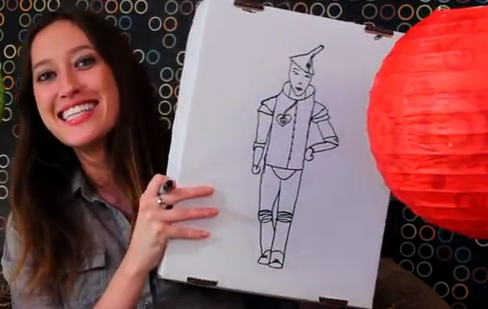On Wednesday, April 8, the First Circuit Court of Appeals in Boston heard oral argument (mp3) on whether a trial of a Boston University student sued for music downloading, Sony BMG Music v. Tenenbaum, should be allowed to be webcast live. Federal district judge Nancy Gertner had agreed to allow the webcast, but the recording industry plaintiffs appealed.
Court rules regarding coverage of trials were written prior to the advent of
the Internet, and were written with still and video cameras in mind.
(There are also varying rules -- many of more recent vintage -- on
other devices in courtrooms, such as cell phones. Those rules are a topic for another day.)
First a short history: There were generally no official rules on
use of cameras to record court proceedings until the 1930s. In 1934,
however, the trial of Bruno Hauptmann for the kidnapping and murder of
the baby of aviator Charles A. Lindbergh attracted extensive media
attention, including disruptive flash photography and a snuck-in movie
camera. The debacle led the American Bar Association in 1937 to adopt Judicial Canon 35, which recommended that both still and movie cameras be banned from courtrooms. In 1962, the ABA amended Canon 35 to also ban television cameras.
All but two states -- Texas and Colorado -- adopted such a ban. At the same time, Congress banned cameras in federal court. The U.S. Supreme Court endorsed these bans in Estes v. Texas, 381 U.S. 532 (1965), in which it reversed a conviction for swindling because of the disruptions caused by cameras in the Texas courtroom. The following year, in Sheppard v. Maxwell, 384 U.S. 333 (1966), the Court reversed a murder conviction because of extensive coverage and disruptive behavior of print, radio and television reporters, mostly outside the courtroom.
But even in Estes the Court was open to the possibility of allowing cameras if the technology became less obtrusive. "When the advances in these arts permit reporting by printing press or by television without their present hazards to a fair trial," the Court wrote, "we will have another case." Estes, 381 U.S. at 540.
These changes in technology came in the 1970s, with smaller, less intrusive cameras. In 1978, the ABA considered changing its rule to allow each court to decide for itself, but ultimately decided not to change the 1937 canon. But the same year, the Conference of State Chief Justices voted that each state should create its own policy towards cameras in state courts. Several states then began to experiment with allowing such coverage, and the U.S. Supreme Court endorsed these experiments in Chandler v. Florida, 449 U.S. 560 (1981), refusing to reverse a murder conviction and holding that Estes did not entirely prohibit camera use in courtrooms, as long as they were unobtrusive.
Now, most states allow for some form of cameras in the courtroom, according to a May 2007 compilation by the Radio-Television News Directors Association. Five states
(Delaware, Illinois, Louisiana, New York and South Dakota) allow
coverage in appellate courts only and prohibit all camera coverage of
trials. Ten other states have strong limitations on cameras in
courts. The District of Columbia bans cameras entirely from all local
court proceedings.
The federal courts conducted a limited test of camera coverage of civil
trials in several federal district courts from 1991 through 1994. At
the conclusion of the test, the committee examining the issue
unambiguously recommended that federal courts allow televised proceedings. But the federal Judicial Conference as a whole
rejected this recommendation, and concluded that “the intimidating
effect of cameras
on some witnesses and jurors was a cause for serious concern.”
Despite
this conclusion, in 1996 some judges of the Southern and Eastern
districts of New York allowed camera coverage of particular cases. See Marisol A. v. Giuliani, 929 F. Supp. 660 (S.D.N.Y. 1996); Katzman v. Victoria’s Secret Catalogue, 923 F. Supp. 580 (S.D.N.Y. 1996);
Sigmon v. Parker Chapin Flanau & Kimpl, 937 F. Supp. 335 (S.D.N.Y.
1996); Hamilton v. Accu-Tek, 942 F. Supp. 136 (E.D.N.Y. 1996).
In reaction to the Marisol decision, in March 1996 the Judicial Conference passed a resolution allowing each federal Circuit to decide the issue for itself, while strongly urging the Circuits to follow the Conference’s 1994 policy and to “abrogate any
local rules of court that conflict with this decision.”
This remains the official policy of the Conference, and its Journalist’s Guide to the Federal Courts states -- incorrectly (see below) -- that "[n]o federal trial court ... permits broadcasting of its
proceedings" and that "[n]o such motion [by news organizations to allow broadcasting of a trial] ever has
been granted."
The result is that camera coverage of federal criminal trials is still generally prohibited, except to allow remote viewing by victims in criminal cases under 42 U.S.C. 10608. See Fed. R. Crim. Pro. 53; see also United States v. Hastings, 695 F.2d 1278, 1279, n. 5 (11th Cir. 1983), reh’g denied, 704 F.2d 559 (11th Cir. 1983).
The
situation regarding civil trials in federal courts is more mixed, with
the policy in a particular court determined by whether the federal
appeals court to which a particular district court is assigned has
taken action under the Judicial Conference policy to invalidate any
district court rules allowing such coverage. If the applicable appeals
court has not taken such action, the district court's rule on the
issue, if any, applies.
It is clear that both the Second Circuit (covering Connecticut, New
York, and Vermont) and the Ninth Circuit (covering Alaska, Arizona,
California, Guam, Hawaii, Idaho, the Mariana Islands, Montana, Nevada,
Oregon and Washington) have not acted to ban cameras in their district
courts. The result is that the district courts within these Circuits
have varying policies, under their own local rules.
It is a bit unclear whether the First Circuit has acted, which was
the major point of contention in oral argument last week. If the First Circuit has not acted, the issue is
controlled by Rule 83.3 of the Local Rules of the United States District Court for the District of Massachusetts, which generally prohibits recording and broadcasting "except ... by order of the court."
Several bills have been introduced in Congress in the past several
years to require federal courts -- except for the Supreme Court, which
sets its own rules -- to allow cameras to cover trials. The current
bill, S. 657, is pending in the Senate Judiciary Committee. Last year, that committee approved a prior version of the bill, but the full Senate did not vote on it.
Camera technology clearly has changed since the Lindbergh baby
days, allowing for unobtrusive recording and broadcasting -- via
television, cable, satellite, or the web -- of trials. In light of
these changes, states that limit coverage of trials, and the federal
Judicial Council, would be well advised to revisit their current,
archaic rules on these issues.
(Note: The CMLP is hosted at the Berkman Center. While Berkman Center co-founder Charles Nesson represents Joel Tenenbaum in this litigation, neither the Center itself nor its Cyberlaw Clinic are involved in that representation. Pursuant to Judge Gertner's order, the Berkman Center may help host the webcast described above if it ultimately takes place.)




